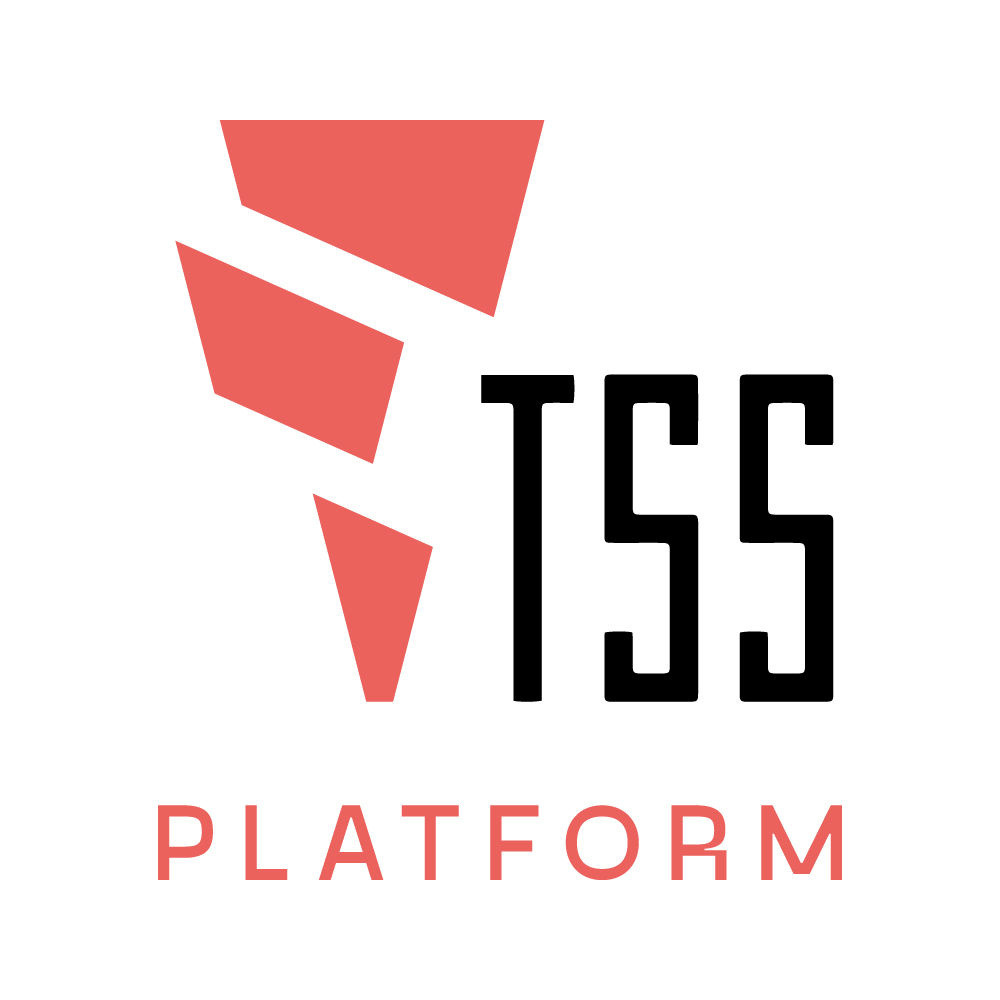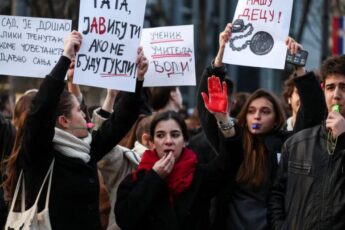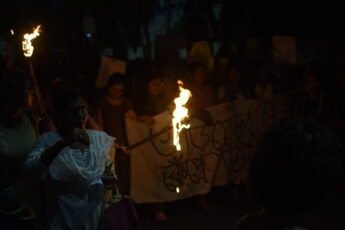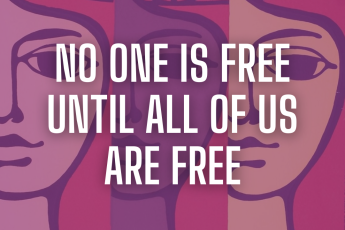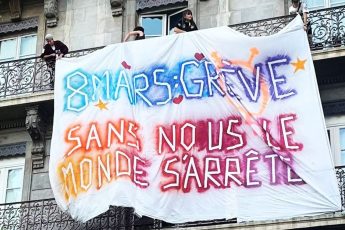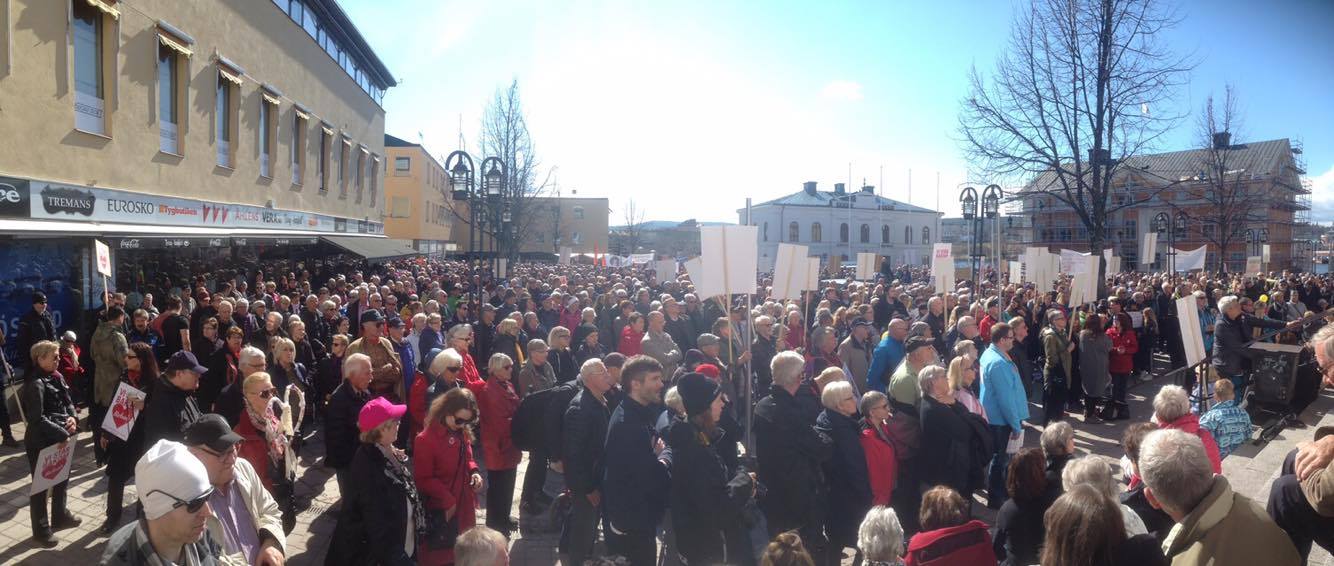
by ERIK PERSSON (ALLT ÅT ALLA UMEÅ)
Since almost a month the maternity ward in Sollefteå (Sweden) is occupied. Besides the decision to close it down, along with the emergency clinic, the reason for this action follows a series of threats and closures of health care facilities in especially the rural areas. But the closure also follows a trend of systematic cuts in reproductive care which we see all over Sweden but even more so on a global scale. The Conflict Corner this week shows how new forms of organizations created in the north of Sweden play an important role in what now is a strong network of social movements working together against austerity packages and neoliberal reforms that cuts vital institutions in the so called periphery of Sweden. In Ådalen, the big geographical rural area the text below concerns, the inhabitants managed to spread, and unite in, a political analysis. To look at this experience from the perspective of the transnational social strike means to highlights its political relevance as example of social struggle but also to discuss how these specific local forms of actions can be extended and joint with the struggle against the attack on welfare on a global scale. In other words, this kind of experiences shows us the importance to work at the local level in a transnational frame both of analysis and practices, aiming at combining local struggles with a political initiative against the neoliberal system as a whole.
On the 31st of January 2012, the residents of the country town Dorotea in the north of Sweden occupied their public health care clinicin protest against the withdrawal of emergency care places.
Three years of occupation, a municipal change of power and the first indicative referendum in a whole council later, the county council eventually gives up. The care sites were restored.
One hundred and fifty kilometres south. Another county. Another austerity package, nevertheless directed against the county in question’s peripheries.
Almost to the day, five years after the occupation began in Dorotea, January 30th 2017, hundreds of Ådalens inhabitants poured into the foyer at SollefteåHospital to declare the place occupied in protest against the impending closure of the maternity ward.
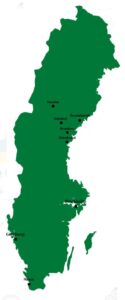
The maternity ward occupation in Sollefteå, just like the Dorotea Uprising, was far from a spontaneous starting point for organising around the issue. Firstly, in Dorotea there was, what one may call, a strong local tradition of resistance to centralisation, including forms of civil disobedience as a tool. In the 1970s, the municipality was the epicenter of wildcat strikes in the forest industry. It was also here in the middle of the decade, that a municipal merger was hampered by citizens occupying the municipal building and hunger striking.
Secondly, there was the occupation itself in 2012, after countless demonstrations and other attempts at advocacy, which began mobilizing local and neighboring populations against the County Council’s package of cuts, called “Project balance”.
This is also the case in Sollefteåand Ådalen, where for example, the hospital had been threatened back and forth for way longer than a decade, in a place where people have lived through decades of state withdrawal. When the shit hit the fan in the autumn of 2015 – despite the ruling Social Democrats’ election promises to preserve the three acute hospitals in the county – citizens were thus at least partially prepared. Among other things, a broad discussion in social media had already started, where local residents discussed the consequences of future cuts.
Ådalen has also a history deeply marked by the site’s role in the Swedish labor movement’s success story during the 1900s. Here five people were shot to death in 1931 by the military during a strike which constituted a sort of culmination of the arms race between capital and labor that led to what is called the “Swedish model” (regulated negotiations between the social partners through the so-called collective agreements).
And despite the decades between the lethal military shooting in 1931, and the tangible threat to life of the various hospital cuts in the mid-2010s, that pose a practical risk, the mental connection is obviously potent. So it was too when the first of several massive demonstrations, in October 2015, went with the tide of history under the slogan of “Ådalen rises”.
Today, a year and a half later, the movement has evolved into a complex network of experimental groups which not only mobilizes through public opinion and on the squares (Association SollefteåFuture Emergency hospital), but in addition through inquiry and investigation (LVN Leaks), exploring alternative forms of operational forms of management like joint ownership in the form of associations (Ådalen rises / Hospitality in northern Sweden), organising health care workers (Ångermanlandsläkarförening, September 4 uprising) and now meeting up with civil disobedience. It has also spread to include Ornskoldsvik, as this hospital has also had to face the threat of austerity within the same framework of cutbacks.
It is undoubtedly impressive, inspiring and touching, despite the sad circumstances that de facto exist, when the county council prefers to drive ahead in what is now mostly considered a matter of prestige.
Ådalen has, one might say – In Dorotea Uprising’s footsteps –offered some fundamentals for how dynamic social movements, that once again want to fill (unfortunately worn) concepts such as democracy and equality with meaning, can be structured. No one can take that away from them, no matter how the struggle for the hospital in general, and its maternity ward in particular, ends.
